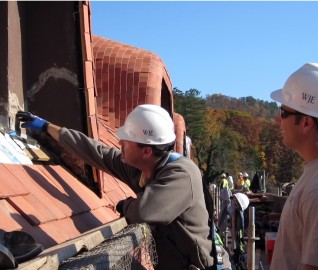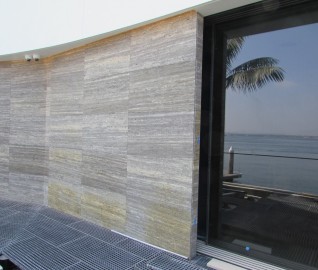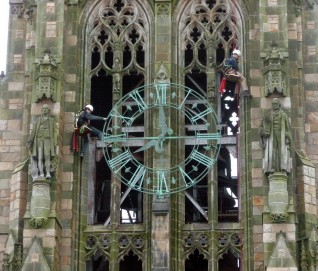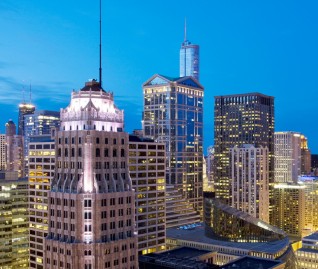Chicago
Ordinance Administration
The Department of Buildings (DOB) administers the facade ordinance for the City of Chicago. The DOB's Exterior Wall Program office is located at 2045 West Washington Boulevard, Chicago, Illinois 60612. The website for the DOB’s Exterior Wall Program includes downloadable forms that are required to be submitted by the licensed professional completing the inspection. Ordinance requirements are outlined in the "Rules for the Maintenance of High-Rise Exterior Walls and Enclosures" (PDF) and in Section 14A-6-603.2 Exterior Walls of High-Rise Buildings of the Municipal Code of Chicago. The Chicago facade ordinance was adopted in 1996. The most recent revision of the Rules became effective on March 1, 2016.
Buildings Requiring Inspection
Chicago's facade ordinance is applicable to building enclosures and exterior walls that are eighty (80) feet or more in height. The ordinance term "exterior walls and enclosures" refers to the exterior envelope of a building or structure, or any part thereof. With regard to “appurtenances,” including balconies, fire escapes, chimneys, hanging air-conditioners, marquees, at-grade canopies, signs, flagpoles, fire escapes, and window washing and exterior maintenance systems, the Rules limit the scope of the inspection to a visual examination of the surface of the exterior wall where appurtenances are in contact with the wall, and their impact, if any, on the integrity of the exterior wall.
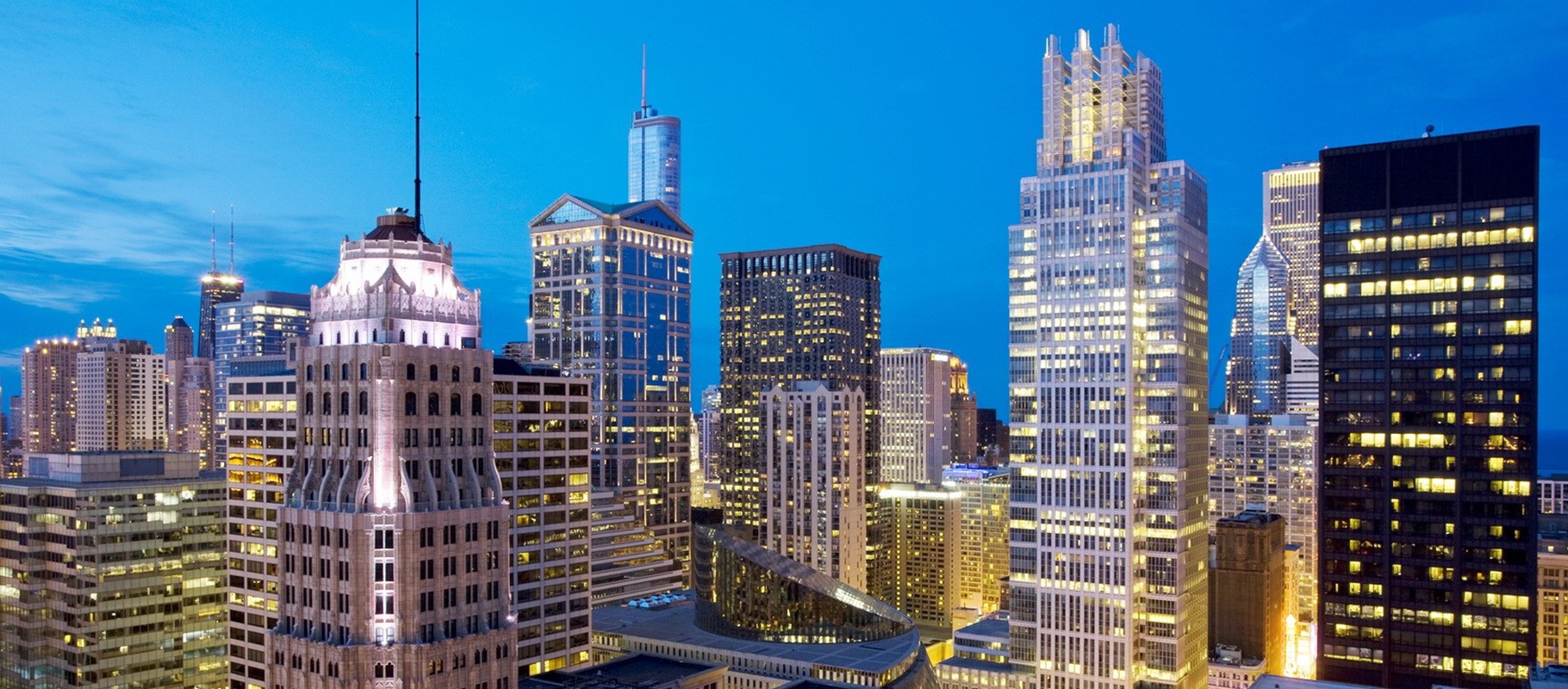
Building Classification
Buildings are classified into four categories based on the exterior wall attachment system and the corrosion potential of any metal that is in direct contact with the exterior wall materials. Inspection intervals and the extent of the inspection effort are dependent on the building classification.
Critical Examination
Critical examinations, which require hands-on inspection on one 24 foot long scaffolding per elevation, are required at four, eight, or twelve years depending on the building classification. Critical examinations also require one inspection opening per elevation on buildings fifty (50) years or older for cladding that consists of masonry, stone or terra cotta that is affixed to the building structure with concealed corrodible or corrosion-resistant metal fasteners. Please refer to the "Short Form" Program section below for circumstances under which a Critical Examination may not be required.
Ongoing Inspection
In addition to the critical examinations, building owners are required to submit an ongoing inspection and repair program report to the city at the halfway point of the critical examination cycle. Hands-on inspections of the facade are not required for the ongoing inspection.
"Short Form" Program
Under the March 1, 2016 Rules and Regulations, owners may choose to file Ongoing Inspection and Repair Program (“Short Form”) reports every second year and not file Critical Examination Program reports at category mandated frequencies, regardless of building category, provided that none of the following criteria apply:
- The building is vacant or subject to registration
- The building is the subject of an active case in the Chicago Department of Administrative Hearings or an outstanding order of compliance by the Chicago Department of Administrative Hearings for a violation; or is the subject of an active case by the City in the Circuit of Cook County or an outstanding order of compliance or consent decree by the Circuit Court of Cook County for violations of the Code
- The building has been classified as “unsafe and imminently hazardous” in the most recently filed report
- The owner of the building is more than one (1) year delinquent in filing an Ongoing Inspection and Repair Report “Short Form”
The “Short Form” Program was originally introduced in 2009. Owners of a building that meets any of the above criteria are ineligible to file an Ongoing Inspection and Repair Report “Short Form” and shall be required to file a Critical Examination Report.
First Report
Owners of new buildings are eligible to enter the "Short Form" Program without filing an initial Critical Examination report, provided none of the criteria listed above apply. The first report is due two years after initial occupancy. If an Owner elects not to enter the "Short Form" Program, the first Ongoing report must be filed at the half-way point of the Critical Examination interval following initial occupancy, followed by a Critical Examination report at the interval stated in the Ordinance. For example, a new Category 1 building can either enter the "Short Form" Program directly and file their first "Short Form" report two years after initial occupancy, or they can file their first Ongoing report at six years followed by a Critical Examination report at twelve years. New building owners should confirm their proposed facade ordinance inspection sequence with the DOB’s Exterior Wall Program prior to filing the first report.
Report
The report for either the critical examination or ongoing inspection requires the inspector to classify the facade as Safe, Safe with Repair and Maintenance Program, or Unsafe and Imminently Hazardous. A special form is required for submission of an Ongoing Inspection and Repair Program report and a special format is required for the Critical Examination Program report.
CONTACTS
Wiss, Janney, Elstner Associates, Inc.Phone: (312) 372-0555
E-mail: facadeordinance@wje.com
City of Chicago Department of Buildings
2045 West Washington Boulevard, Chicago, IL, 60612
Phone: (312) 743-3449
Email: dob-info@cityofchicago.org
RELATED INFORMATION FROM WJE.COM
-
![]() Clients turn to us when they need a firm that fully understands the aesthetic and functional... MORE >Services | Building Enclosures
Clients turn to us when they need a firm that fully understands the aesthetic and functional... MORE >Services | Building Enclosures -
![]() Learn about reducing the risk of degradation in your building facades. MORE >Webinars | Understanding the Causes and Significance of Facade Degradation
Learn about reducing the risk of degradation in your building facades. MORE >Webinars | Understanding the Causes and Significance of Facade Degradation -
![]() WJE professionals have successfully diagnosed and solved problems in thousands of building facades MORE >Services | Facade Assessment
WJE professionals have successfully diagnosed and solved problems in thousands of building facades MORE >Services | Facade Assessment -
![]() Learn about our Chicago office MORE >Offices | Chicago
Learn about our Chicago office MORE >Offices | Chicago



